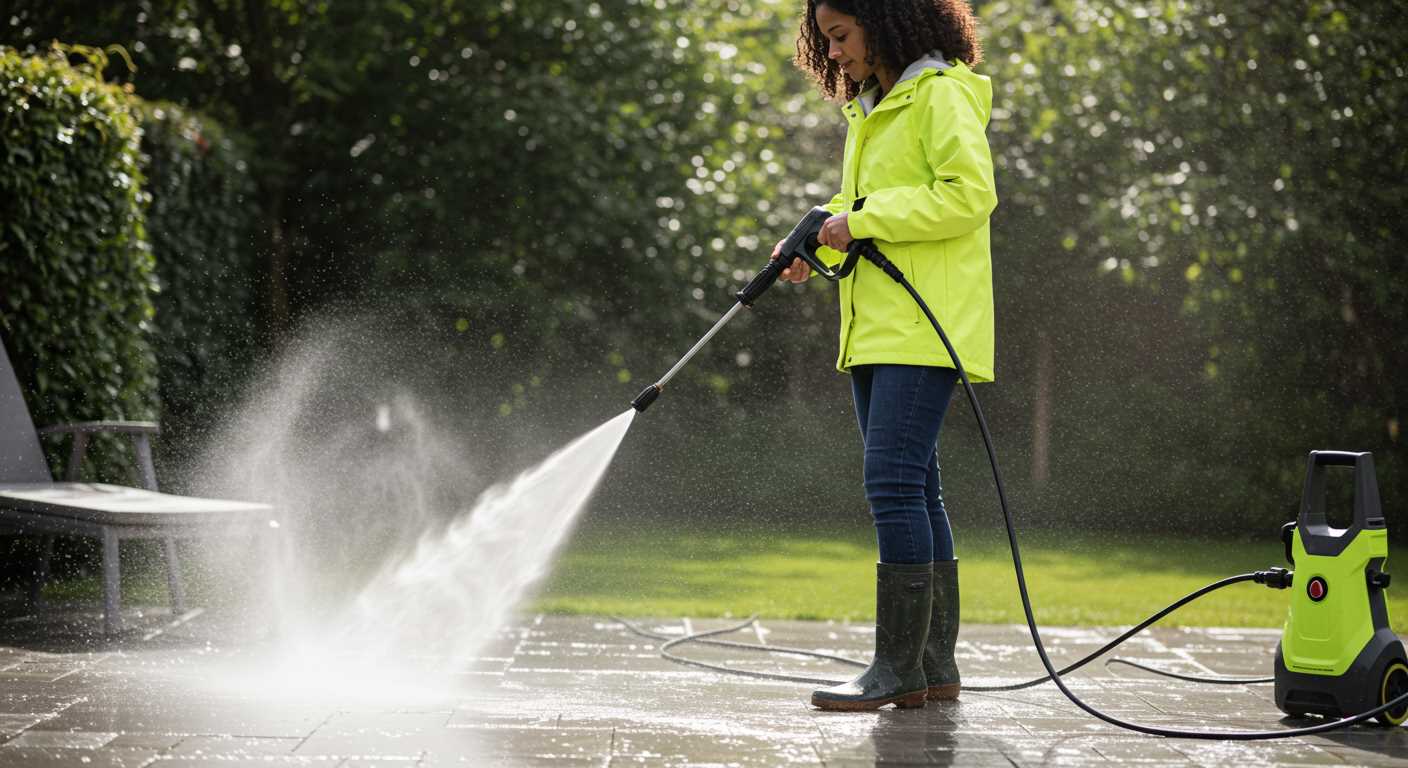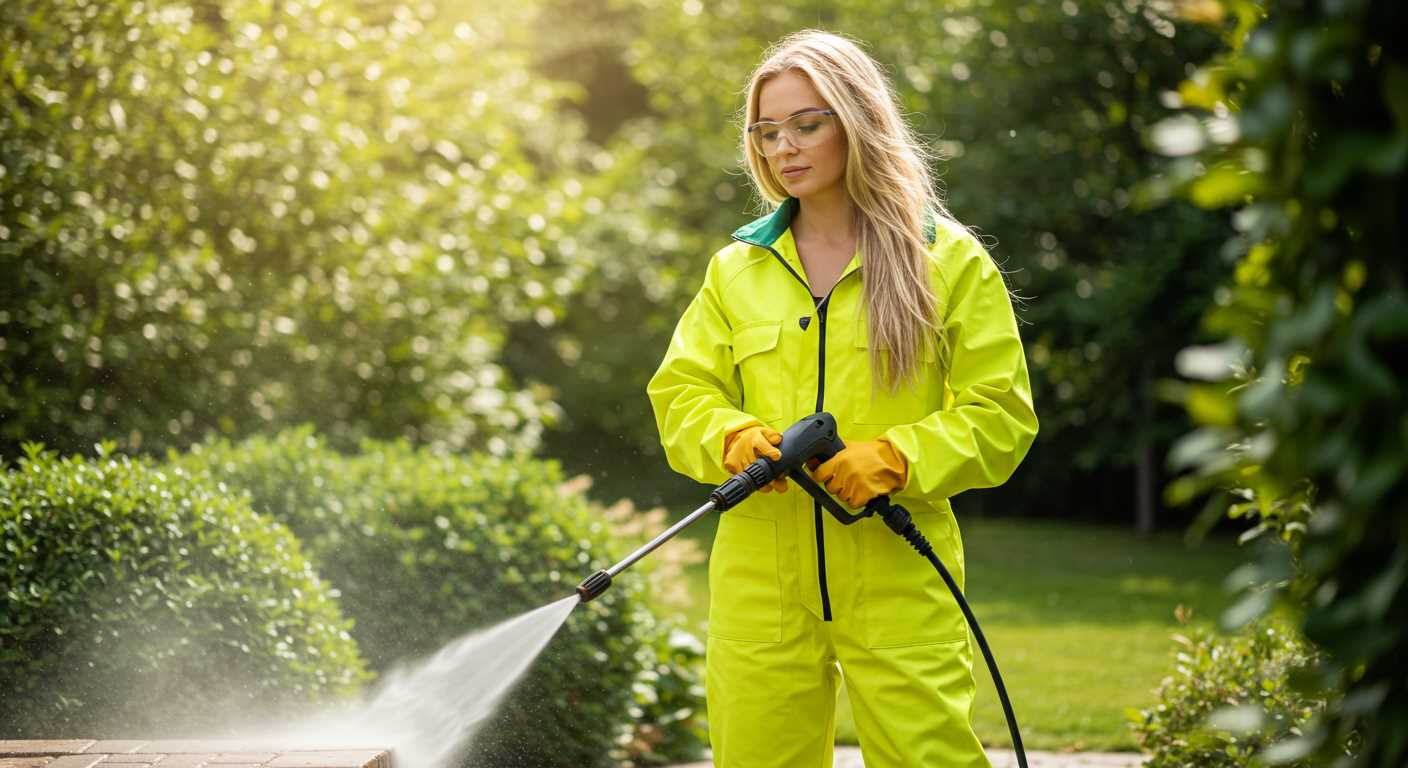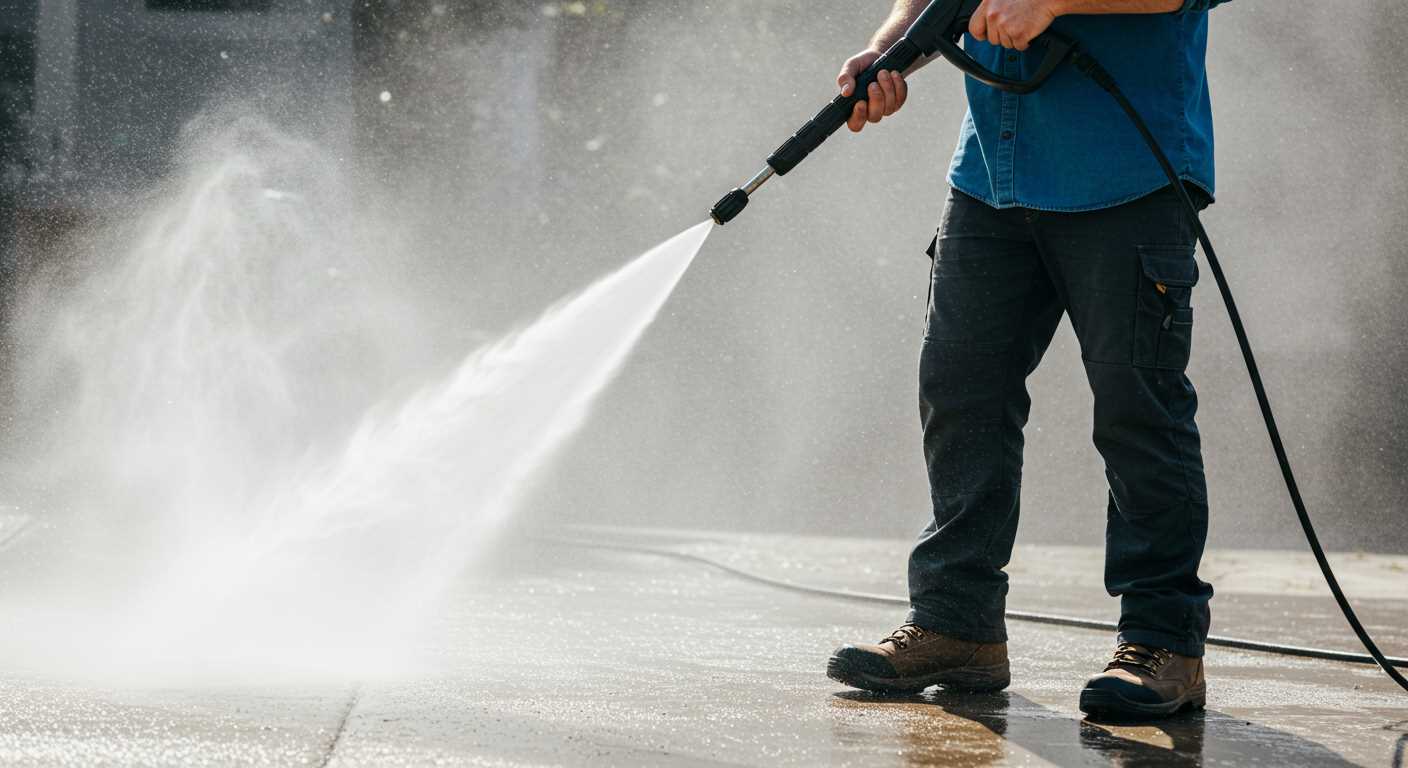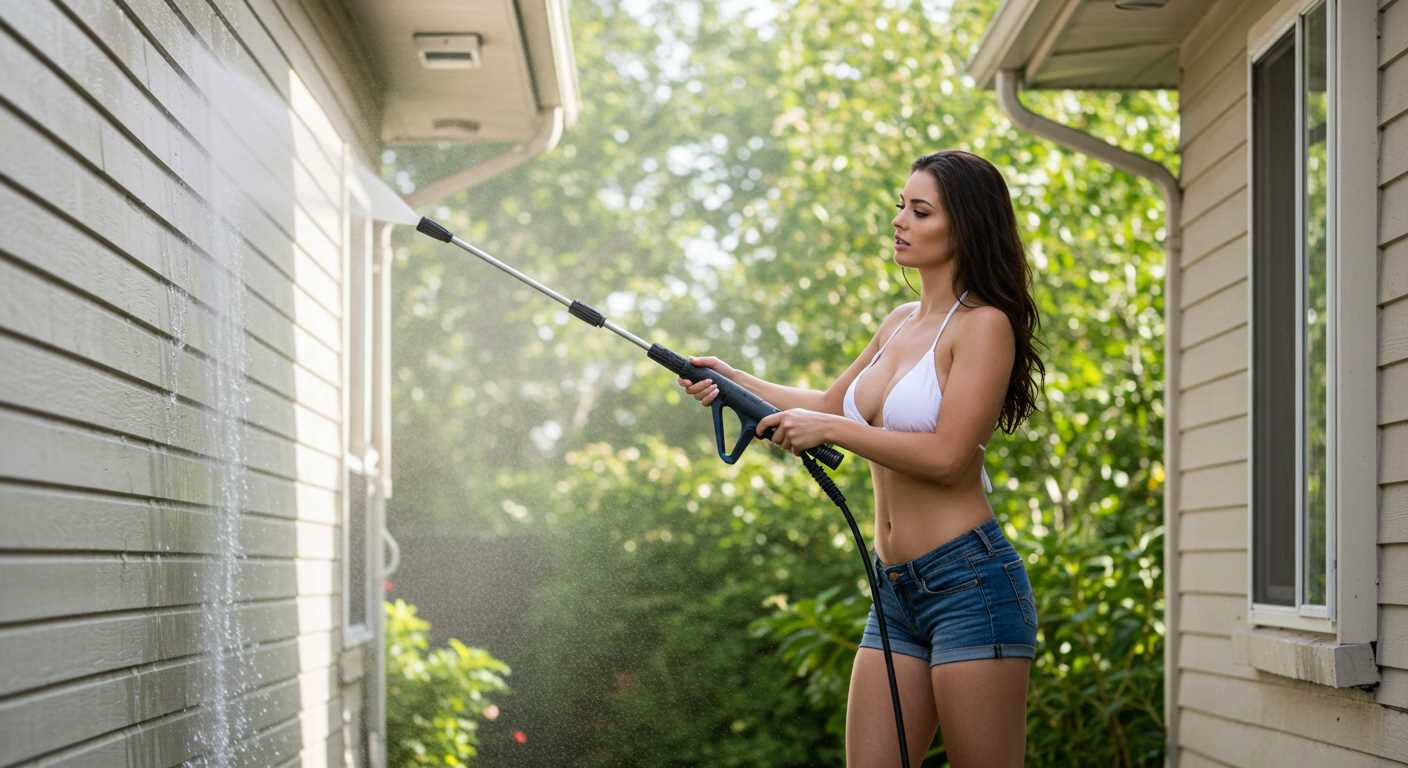

The first step to ensuring the longevity of your cleaning unit is to thoroughly eliminate any remaining detergent or residue. Start by disconnecting any accessories connected to the outlet and remove the water inlet hose. Then, attach the water supply directly to the device. This allows for a clear pathway for cleansing fluid to flow through.
Next, turn the machine on without engaging the trigger. Let it run for about two minutes. This clears out any remnants of cleaning solutions lodged within the system. It’s essential to keep an eye on the water discharge; if you observe suds or foam, continue this process until the fluid runs clear.
After completing this step, disconnect the unit from the water supply and engage the trigger briefly to release any remaining fluid. This action helps to expel any last traces of detergent. Store your equipment in a dry place to prevent any internal moisture accumulation that could lead to damage.
Regularly performing these actions will not only enhance the performance of your device but also extend its life significantly. Adopting a maintenance routine ensures your high-pressure cleaning tool remains in peak condition, ready for the next task.
Steps to Clear Out Your Cleaning Machine
Always begin with disconnecting the unit from its power source. This ensures safety while handling the equipment.
Next, empty the fluid from the tank. If applicable, open the tap or valve at the bottom to allow any remaining liquid to flow out completely.
After draining, fill the container with clean water. Start the machine briefly to have the system circulate this new fluid. This action helps to remove residues and prevents clogging.
Run the unit for a minute, then turn it off. Disconnect the spray wand and aim it at a secure area to release any remaining water and pressure.
To finish, rinse all detachable components separately, such as the hose and nozzle, using clean water to eliminate any leftover debris. Store your device in a dry and safe place, ready for future use.
Gather Required Tools and Materials

To prepare for the maintenance process effectively, I recommend collecting the following tools and materials:
Tools

1. Wrench Set: Use a suitable sized wrench to remove any fittings if needed.
2. Screwdriver: A screwdriver might be required for minor adjustments or securing components.
3. Garden Hose: Ensure you have a standard garden hose for water supply, preferably one that is at least 25 feet long.
4. Bucket: A bucket will help in collecting any residual fluids during the flushing process.
Materials
1. Fresh Water: Clean water is essential for the operation.
2. Cleaning Solution: Opt for a manufacturer-approved cleaning agent if your device requires it.
3. Protective Gear: Gloves and safety glasses to safeguard against any splashes.
Gather these items before beginning to ensure a smooth and seamless operation.
Shut Down and Disconnect the Pressure Washer
First, switch off the equipment and unplug it from the power source to ensure safety. Allow the machine to cool down for a few minutes before proceeding.
Next, turn off the water supply. This eliminates any risk of leaks while you disconnect the hoses. Detach the high-pressure hose from the outlet on the device carefully, avoiding any sudden movements that could cause injury.
Remove the water inlet hose as well, ensuring that both hoses are in good condition for future use. Store them properly to prevent kinks and damage.
Check for Residual Water
With the hoses detached, inspect the interior of the unit for any remaining liquid. If you notice any excess, place the device on an incline to allow the water to drain fully.
Final Inspections
Before storing, give the body of the machine a quick wipe down. Look for any signs of wear or damage on hoses and connectors to address any issues early. Keep the unit in a dry place to prolong its lifespan.
Access the Water Inlet and Filter

To begin, locate the water inlet on your equipment. This is typically situated at the front of the unit, often labelled for easy identification. Inspect the area to ensure there are no obstructions.
Remove the Inlet Screen
Next, you will need to detach the inlet screen. This component can usually be removed by unscrewing or unclipping it. Use caution not to damage the threads or fittings during this process.
Check for Debris
With the screen removed, examine it closely for any clogs or buildup. It is vital to ensure the screen is clear to maintain proper water flow. Clean the filter using running water and a soft brush if necessary, ensuring no remnants are left behind.
- Ensure the inlet threads are not stripped.
- Inspect the rubber sealing ring for wear and replace it if needed.
- Reattach the screen securely after cleaning, ensuring it is snugly fitted.
After this step, your system’s water intake will be in optimal condition, significantly improving performance and preventing potential issues down the line.
Flush Out the Water System

Begin by connecting a garden hose to the water inlet. Ensure the other end is firmly attached to a reliable water source, such as a faucet. This step guarantees that clean water flows continuously through the equipment during the cleansing process.
Next, turn on the water supply fully and allows it to run for several minutes. This action clears out any residue or debris left in the pipes. Maintaining pressure during this phase is significant; avoid using any spray nozzle.
After running the water, switch your focus to the inlet filter. Remove it and check for any blockages or impurities. Rinse it under clean water to eliminate trapped particles. Once done, let it dry completely before reinstallation.
Reconnect the filter and ensure it’s secure. At this point, you should check for leaks at all connection points while the water is on. If any leaks occur, tighten the connections properly.
Lastly, switch off the water supply and disengage the hose from the inlet. This procedure prepares the entire water system for subsequent usage, ensuring optimal performance during future operations.
Check and Clean the Nozzle
Inspect the nozzle for clogs or debris that can hinder performance. Remove it carefully, ensuring no damage occurs to the threads or fittings. Use a narrow needle or a fine wire to clear any blockages in the orifice; even a tiny piece of dirt can affect spray quality.
Cleaning Process
After clearing the nozzle, rinse it thoroughly with clean water. Soak it for a few minutes in a mix of warm water and mild detergent if stubborn grime persists. Finally, ensure it is completely dry before reassembly.
Reassemble and Test

Once the nozzle is clean, attach it securely back onto the wand. Test the unit on a non-sensitive surface to verify that the spray pattern is consistent and effective. Regular maintenance of the nozzle will ensure optimal operation and longevity of the equipment.
Reconnect and Test the Pressure Cleaner
.jpg)
After completing all necessary maintenance, connect the water supply and power source. Ensure the hose is securely attached to the water inlet and there are no leaks.
Turn on the water supply fully before activating the machine. This step is crucial to prevent damage to the internal components. Next, switch on the unit and set it to a low-pressure mode. This will allow you to observe the operation without stressing the motor.
While it runs, watch for any irregular sounds or vibrations. If all seems normal, gradually increase the pressure setting. Test the spray nozzle with a few different angles, making sure the spray pattern is consistent and well-defined. It’s important to observe that the water flow is steady without any interruptions.
If issues arise, such as pulsing, inconsistent flow, or strange noises, disconnect the unit immediately. Inspect the filter and nozzle again, as clogs may have developed during the reassembly process.
| Step | Description |
|---|---|
| 1 | Reconnect the water supply ensuring no leaks. |
| 2 | Activate the machine on a low-pressure setting. |
| 3 | Monitor for unusual sounds or operation issues. |
| 4 | Gradually increase pressure and test nozzle angles. |
| 5 | Disconnect if problems occur and inspect components again. |
This systematic approach ensures your equipment is functioning at its best. Regular testing and careful observation will prolong the lifespan of your tools and enhance their performance.







